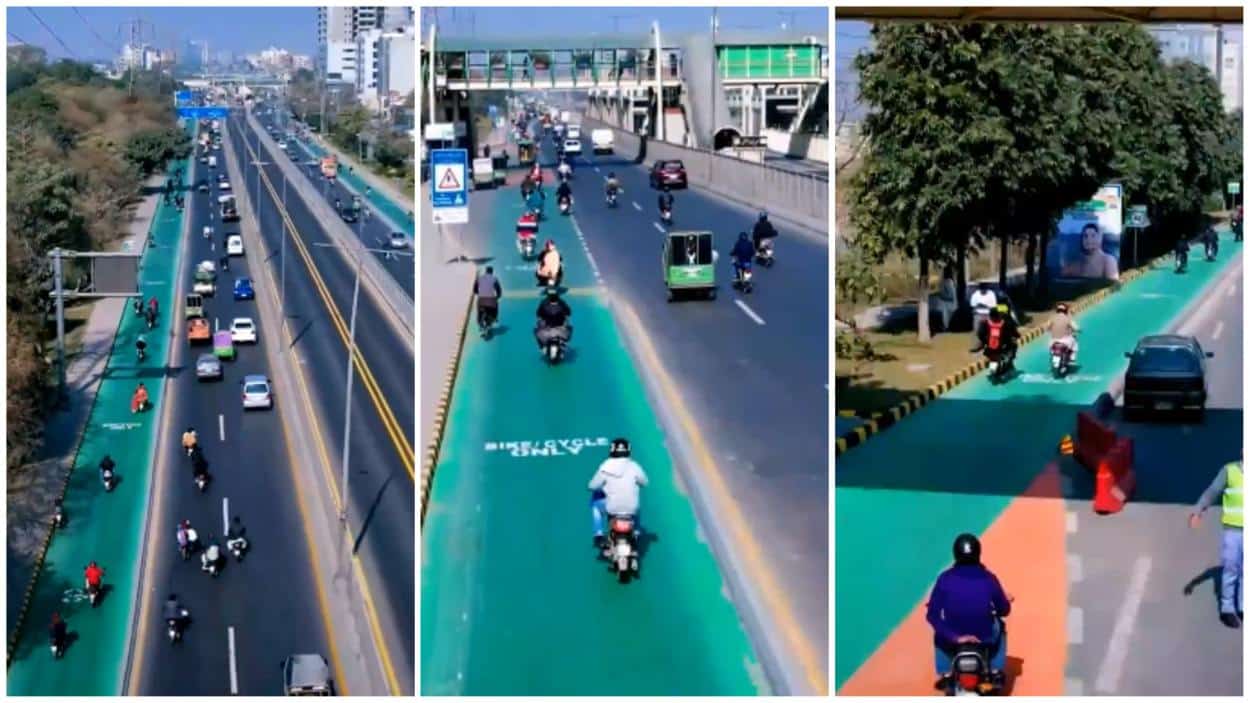The Punjab government has consistently adopted development models from advanced nations. Its latest initiative is a 10-kilometer biker’s lane along Ferozepur Road, a project led by the Lahore Development Authority (LDA).
The pilot project, which cost Rs1 billion, is nearly completed. However, it has already ignited a debate among critics who argue that the lane reduces road width, potentially exacerbating traffic congestion.
The LDA unveiled the Punjab biker’s lane project as a dedicated path for cyclists and motorcyclists. It draws inspiration from Beijing’s urban planning from Canal Road to Lahore Bridge.
Provincial Information Minister Uzma Bukhari praised the vision: “Chief Minister Maryam Nawaz aims to reduce accidents and streamline traffic flow.” She added that future expansions could cover all major roads, urging public support for its success.
However, challenges emerged even before the official launch. Fading lane paint, poor drainage, and buses dropping passengers directly onto the road have raised eyebrows. These issues threaten to undermine the project’s goals.
Read: Maryam Nawaz Inaugurates Electric Bus Transport System in Lahore
Faisal Mahmood, a daily motorcycle commuter, worries about safety. “The metro bus lane and bridges already shrank Ferozepur Road,” he said. “This new biker’s lane might increase accidents, not prevent them.” Similarly, resident Robinson Arif pointed to past failures. “The government reversed similar projects due to narrow roads,” he recalled. “They should widen roads first for sustainability.”
A Traffic Police and Rescue 1122 report supports these concerns. Ferozepur Road sees 5-10 daily accidents, 65% involving motorcyclists. Safety remains a pressing issue.
Not everyone is optimistic. Former Additional IG of Traffic Police, Rai Altaf Hussain, slammed the approach. “Copying foreign models without adapting to local conditions is flawed,” he argued. Instead, he urged collaboration with traffic authorities. “Projects must enhance flow and cut accidents without disrupting current dynamics,” Hussain advised.
An anonymous LDA Town Planning Director echoed this sentiment. “We rushed this pilot without proper planning,” they admitted. “Using a congested road risks worse traffic conditions.”
Despite the backlash, LDA Director General Tahir Farooq remains confident. “Once fully operational, the biker’s lane will ease these problems,” he insisted. The LDA sees it as a stepping stone to safer, smoother roads.
The Punjab biker’s lane project is a bold experiment inspired by global cities. It promises reduced accidents and better traffic flow. Yet, its success hinges on addressing local realities—narrow roads, drainage issues, and commuter safety. Will it transform Ferozepur Road or become another reversed initiative? Time and public cooperation will tell.
For now, the government faces a clear challenge: adapt ambitious plans to Punjab’s unique needs. Only then can this biker’s lane truly pave the way forward.






